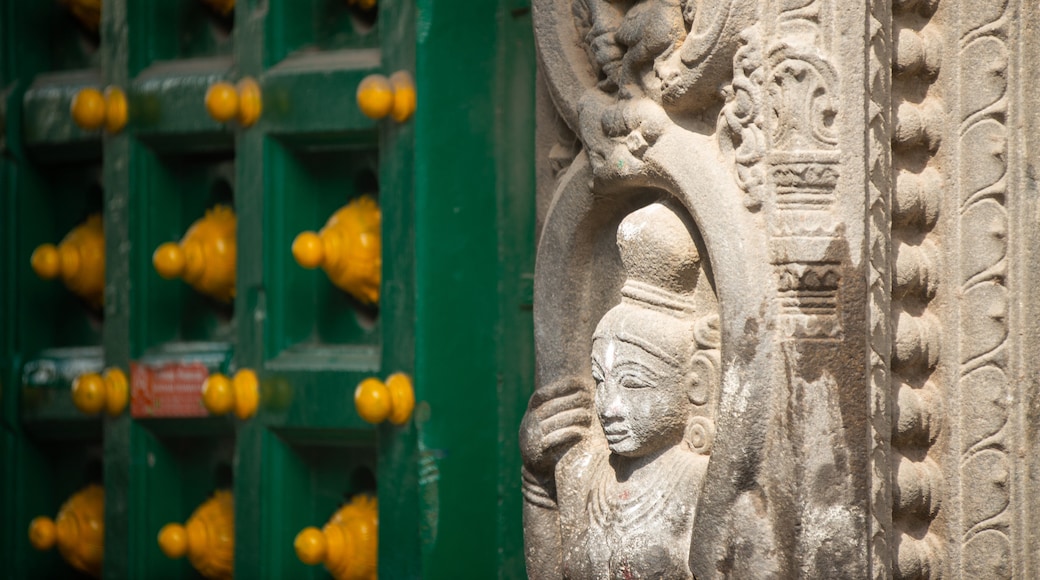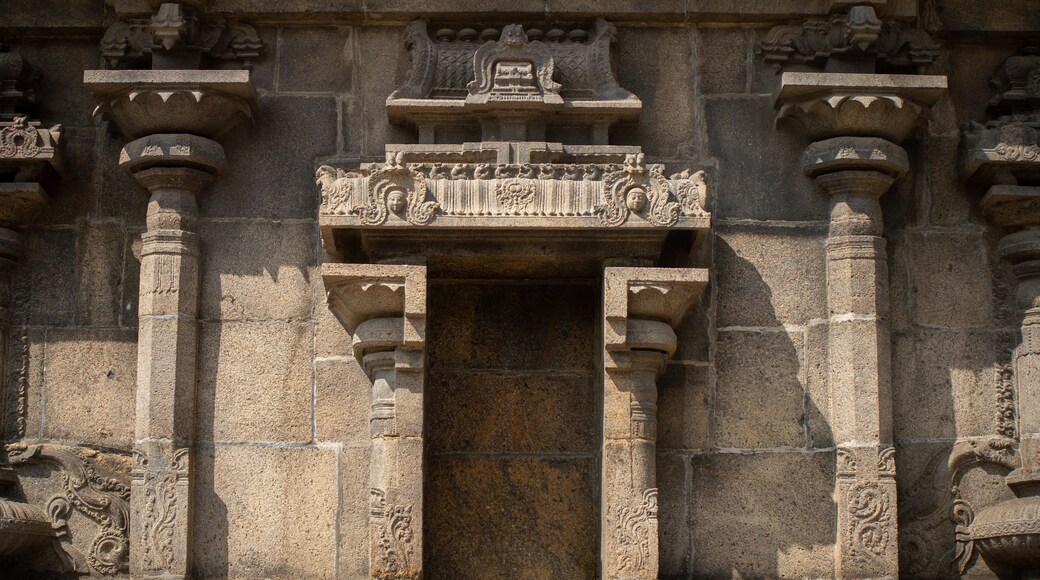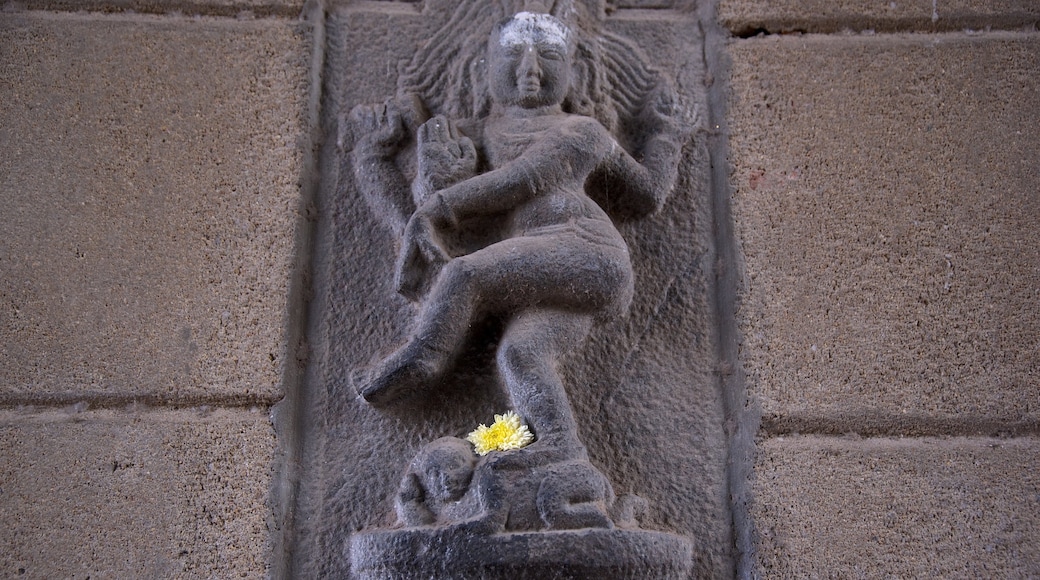A visit to the beautiful Kapalishvara Temple presents a fascinating glimpse into the life of a working Hindu temple. Admire the striking Dravidian architecture and a sacred tank. Watch as worshippers lay offerings to the deities and be part of a colorful Hindu celebration. Kapalishvara Temple honors the Hindu god Lord Shiva and his wife Parvati. The temple dates back to the 16th century and is the second edition. The original, built around 600 A.D., was demolished by Portuguese colonists.
Major highlights of the temple are the two towering and elaborately decorated gopuram (gateway entrances). The almost 131-foot-tall (40-meter) east gopuram is the most striking and a fine display of Dravidian architecture. Gaze up to see carvings of allegorical figures, gods and mythological creatures. See more detailed artwork on the smaller west gopuram. It faces a sacred lake, where pilgrims throw offerings to a multitude of fish.
Step inside the temple to feel a sense of calm. Observe respectfully as devotees ask for blessings at the various shrines. Look for bronze statuettes of the Nayanars, a group of 63 poet saints devoted to Shiva. Spot sculptures of revered Hindu gods such as Ganesh, Karpagambal, Muruga and Shiva. Visit on a Friday to see the Goddess Karpagambal decorated with garlands of gold coins during a ritual.
The temple hosts several festivals throughout the year, when thousands of pilgrims flock to celebrate Hindu traditions. Attend the Arubathimoovar Festival, a 10-day event held during March and April. It celebrates the Nayanars and includes a lively procession of brightly colored chariots.
Located in the Mylapore neighborhood, Kapalishvara Temple is about a 20-minute drive from Chennai’s city center. Taxis and auto-rickshaws provide easy access to the temple or you can catch a train to nearby Thirumayilai MRTS Station. While here, be sure to wander the surrounding streets to find shops that sell flowers, incense and religious souvenirs.
The temple is open daily, from dawn until dusk. It’s an active place of worship, so dress appropriately. Remove your shoes and leave them at the temple’s entrance. Find the complete opening times and a festival schedule on the temple’s official website.














